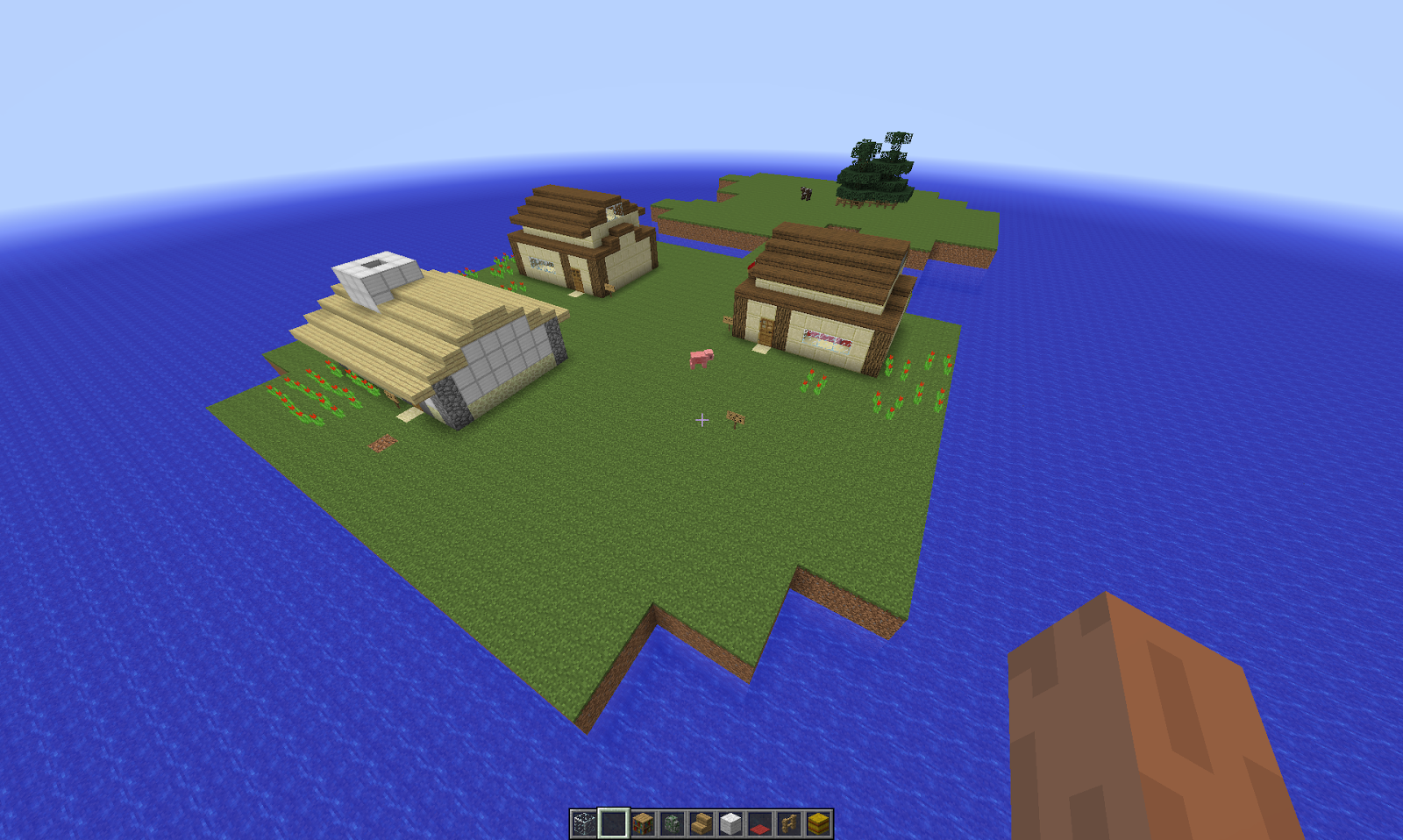I purchased a Minecraft licence a few years ago but never really used it because I don't play video games too often. But last month I downloaded the launcher and the game and started playing. From there I made a creative world with a massively long highway plus a few bridges and a survival world which just has a small house. But I wanted to make something quite large and detailed which is quite a challenge in Minecraft because only so much detail can be made with one large block. Thinking of what to do for a challenge I remembered Pokémon Ruby version which was set in the Hoenn Region. This game brings back a lot of memories, from the music to the Pokémon and the locations you can visit. Re-creating the Hoenn region seemed like the ideal thing to do.
Yes I am aware that I am not the first to do this but my aim to do this without any mod's or texture packs so anyone viewing the region when it's finished (if it's ever finished) is to make it compatible with all games and to avoid having to get people to download dodgy texture packs from shady websites. Also it seems that every Hoenn region I've seen that's been made in Minecraft has a sort of manicured look in regards to the trees and plants. So I've decided to keep it simple by planting trees and letting them grow naturally.
But immediately there were problems.
1. Pokémon buildings are about twice as large on the inside as they are on the outside. Same goes for caves and any other building or doorway you enter. Gyms are the worst offender.
2. Blocks in Minecraft appear to have a smaller surface area than the walking tiles in Pokémon.
3. Small details (tables, cushions, furniture, etc) are difficult to recreate.
But in my mind there is a solution to everything. So to fix problems 1 and 2 was to make one walking tile in Pokémon two walking tiles in Minecraft so the region is effectively 2x the size. Not only does this mean the buildings are big enough to have interiors but it makes the region feel more life like. The fix to problem 3 was to improvise. Using 2 iron block stacked up on each other to make a fridge for example.
In the last week some good progress was made. Littleroot Town, Route 101 and Oldale town were complete. So was Route 102, Petalburg City and a part of Route 103 but that's for the next part.
The world started as a Superflat world with 1 layer of Bedrock, 5 layers of stone, 5 layers of dirt and 3 layers of water.
LITTLEROOT TOWN
The first thing to do was lay a foundation for Littleroot Town. Every town and route has a layer of dirt that extends to the bottom of the water (3 blocks high). Blocks are then added on top to create the final layer.
Adding detail and buildings. The problem with Pokémon as highlighted beforiv that the buildings are bigger on the inside than they are on the outside which is impossible in the real world, or indeed, Minecraft.
It was difficult but possible to make the houses in Littleroot Town double story just as they are in the game, but the cubes of Minecraft make it difficult to add small detail. Shown below is downstairs and upstairs interiors of the Pokémon games rival.
Signs are placed with the text that would appear in the game. All the texts are from Ruby version.
ROUTE 101
Route 101 connects Littleroot Town to Oldale town. It is a short route and was easy to create.
Grass grown by bonemeal represents the tall grass where wild Pokémon hide. I suppose the passive mobs will stand in as Pokémon for now.
Pine trees were the most suitable because they have low leaves which makes them feel like barriers as they do in the game.
Pine wood stairs double as one way ledges. Green coloured clay makes up the spots where a different sort of grass is seen in the Pokémon game. Green wool was considered but was way too bright and too unnatural looking to be appropriate.
OLDALE TOWN
Oldale town is the next town from Littleroot. According to Bulbapedia, Oldale Town is the second smallest town in Hoenn with a population of just 16.
Once all the buildings were complete and the flowers had been planted, Oldale town was pretty much done.
The Interior of the Pokémon Centre is about as detailed as it can be. In an attempt to imitate the Pokémon, restore thing there is an enchantment table. A sandstone floor is the closest thing to a tiled floor as found in the game, and rugs made the best cushions.
This is the interior of the Pokémart. It looks more realistic than the Pokémon Centre. Bookshelves for shelves, Glass for a checkout counter, Quartz stairs for a cash register and Emerald blocks for the floor.
BIRDS EYE VIEW
After foresting Route 101 it looks quite good.
Oddly after about 10 minutes of gameplay there would be some sort of graphical glitch that makes the sides of block transparent (see the houses) and blocks in the distance transparent. Fixing it involves restarting the game but the fix is only temporary.
And finally, a preview of what it looks like on the ground before you start your adventure looking north towards Route 101 and Oldale Town.
That's all the progress so far.
In the next part I will cover Route 102 and Petalburg City.
Stay tuned.
If you have any tips for improvement don't hesitate to share. Please comment.
















Very good! This is a huge inspiration for me even years later! Thanks
ReplyDelete